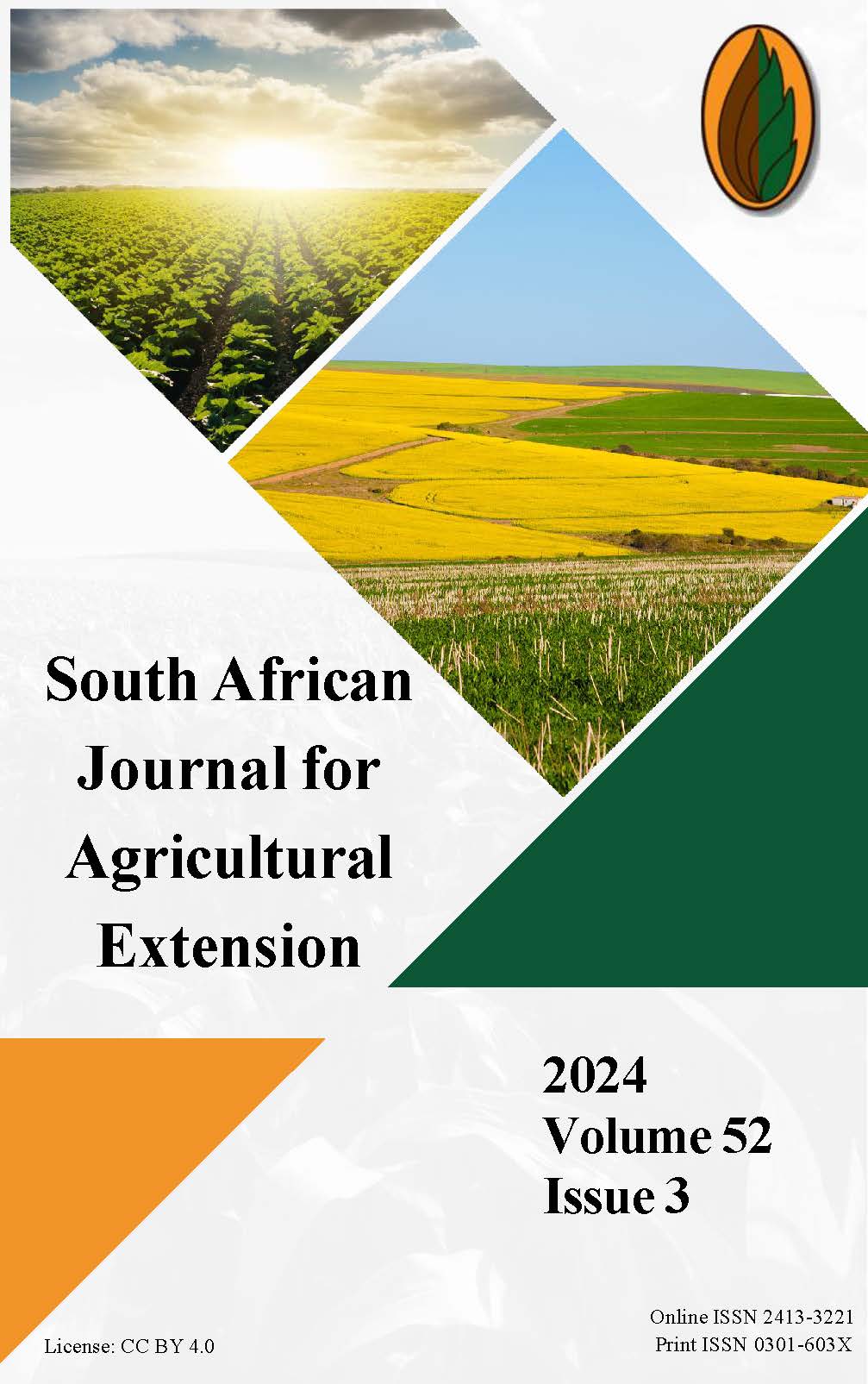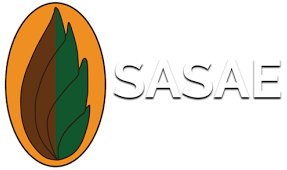Assessment of Reproductive Dynamics and Production Efficiency among Communal Sheep Flocks in the Free State Province, South Africa: A Comparative Study
DOI:
https://doi.org/10.17159/2413-3221/2024/v52n3a12917Keywords:
Management practices, Sustainability, Weaning Percentage, Wool Sheep , Continuous GrazingAbstract
Sheep farming plays a significant role in generating economic opportunities and employment on a global scale. It is a vital support system for rural economies, mainly where agricultural alternatives are scarce, like farmers living in arid and semiarid areas. This article aims to investigate and promote sustainable communal sheep farming practices and examine the significance of the weaning percentage and how it determines the communal wool industry's success, economic viability, and sustainability. Additionally, the article will address the challenges these farmers face in sweet-, sour- and mixed grass veld types. Furthermore, the article will explore the impact of lambing seasons and flock structures on ewe productivity and identify strategies to mitigate adverse effects in communal sheep flocks. Lastly, the article will discuss management practices in sheep production systems, considering their economic and environmental sustainability. The mean weaning percentage, a critical indicator of reproductive success and productivity, was 48.78%, reflecting substantial dispersion within a sample population of 9 603 sheep across 351 farmers' interviews. Pure breeding exhibits a 5.6% higher weaning percentage than crossbreeding. In cases where there was inbreeding, the weaning percentage was 11.3% lower than that of flocks using unrelated rams. Statistical analysis further underscores the substantial influence (p<0.001) of consistent dissemination of production and reproduction technical information, facilitated through governmental initiatives and stakeholder engagements, in driving these improvements. Best sheep and health management practices are paramount for enhancing the weaning percentage of sheep flocks. The quality of grazing and the utilisation of well-adapted breeding stock are pivotal factors. Statistical analysis reveals a significant impact (p<0.05) of rotational grazing with a herding effect (extensive grazing) compared to free grazing (continuous grazing) with minimal management. Integrating labourers into communal sheep enterprises profoundly influences various operations, notably sheep herding, where they safeguard animals, identify health issues, and guide flock movements to optimal grazing areas, enhancing nutrition and weaning percentages.
Downloads
References
ARC-NRE., 2023. Imate projections for targeted catchments and the impact on wetland and catchment management. Available from: chrome-extension://efaidnbmnnnibpcajpcglclefindmkaj/https://www.dalrrd.gov.za/images/Docs/althea-grundling-.pdf
DEPARTMENT OF AGRICULTURE FORESTRY AND FISHERIES., 2018. Long-term grazing capacity for South Africa, Issue 41870.
DAVID, T.H., 2022. The contribution of wool production to the sustainability of crop/pasture production systems in the Southern Cape. Stellenbosch.
DOMINATI, E.J., MASEYK, F.J.F., MACKAY, A.D. & RENDEL, J.M., 2019. Science of the total environment farming in a changing environment : Increasing biodiversity on farm for the supply of multiple ecosystem services. Sci. Total Environ., 662: 703–713.
FOUCHÉ, H.J., DE JAGER, J.M. & OPPERMAN, D.P.J., 1985. A mathematical model for assessing the influence of stocking rate on the incidence of droughts and for estimating the optimal stocking rates. J. Grassl Soc South Afr., 2(3): 4–6.
HAJDU, F., NEVES, D. & GRANLUND, S., 2020. Changing livelihoods in rural Eastern Cape, South Africa ( 2002 – 2016 ): Diminishing employment and expanding social protection. J. South. Afr. Stud., 46(4): 743–772.
HALIMANI, T., MARANDURE, T., CHIKWANHA, O.C., MOLOTSI, A.H., ABIODUN, B.J., DZAMA, K. & MAPIYE, C., 2021. Climate risk management smallholder sheep farmers' perceived impact of water scarcity in the dry ecozones of South Africa: Determinants and response strategies. Clim. Risk Manag., 34(March), 1–9.
HENDERSON, L., 2015. Technical support for wool sheep farmers. Stockfarm., May: 22–23.
KHWIDZHILI, R.H. & WORTH, S.H., 2016. The sustainable agriculture imperative: Implications for South African Agricultural Extension. S. Afr. J. Agric. Ext., 44(2): 19–29.
MAGAWANA, M., DUGMORE, T.J., DE VILLIERS, J.F. & GCUMISA, S.T., 2021. Effect of lambing season, year, sex and birth status on weaning and post-weaning growth performance of Merino lambs. Appl. Anim. Husb. Rural Dev., 14: 61–68.
MAPILIYAO, L., PEPE, D., MARUME, U. & MUCHENJE, V., 2012. Flock dynamics, body condition and weight variation in sheep in two ecologically different resource-poor communal farming systems. Small Rumin Res., 104(1–3): 45–54.
MEISSNER, H.H., HOFMEYER, H.S., VAN RENSBURG, W.J.J. & PIENAAR, J.P., 1983. Classification of livestock for realistic prediction of substitution values in terms of a biologically defined Large Stock Unit. Tec. Comm. No 175. Pretoria: Department of Agriculture.
MOCWIRI, B.S., 2022. Mangaung Metro Wool Commodity. Free State Department of Agriculture and Rural Development.
MSUNTSHA, E.A. & VAN ZYL, P.P., 2019. Investigation into the current communal wool production enterprise in the Nquthu District of KwaZulu-Natal.
MYENI, L., MOELETSI, M., THAVHANA, M., RANDELA, M. & MOKOENA, L., 2019. Barriers affecting sustainable agricultural productivity of smallholder farmers in the eastern Free State of South Africa. Sustainability., 11(11): 1–18.
NKAMISA, L., 2020. Assessing the competitive performance of smallholder wool growers in the South African wool industry. Masters Dissertation. Stellenbosch University.
PARASKEVOPOULOU, C., THEODORIDIS, A., JOHNSON, M., RAGKOS, A., ARGUILE, L., SMITH, L., VLACHOS, D. & ARSENOS, G., 2020. Sustainability assessment of goat and sheep farms: A comparison between European countries. Sustainable Livestock Prod., 12(8): 1–23.
RAMAPHOSA, C., 2023. President Cyril Ramaphosa 2023 State of the Nation Address. South African Government. The Presidency.
RAO, C.M., 1991. Raosoft. Available from: http://www.raosoft.com/samplesize.html
ROJAS-MORENO, D.A., ARAÚJO, R., PENA-BERMUDEZ, Y.A., THEODORO, V., SARTORELLO, G.L., DA, C., FILHO, S., AGOSTINHO, F., BUENO, I.C.S. & GAMEIRO, A.H., 2022. Can we obtain high productivity allied to environmental gains ? An emergy-economic study of sheep meat production systems. Clean. Prod., 365(November 2021): 1–13.
SAMUELS, M.I., MASUBELELE, M.L., CUPIDO, C.F., SWARTS, M.B.V, FOSTER, J., DE WET, G., LINKS, A., VAN ORSDOL, K. & LYNES, L.S., 2022. Climate vulnerability and risks to an indigenous community in the arid zone of South Africa. J. Arid Environ., 199(May 2021): 104718.
SANKATANE, M.R., 2018. Assessment of the sheep production management systems of small-scale farmers in the Maluti-a-Phofung Local Municipality of the Eastern Free State. Masters Thesis. Central University of Technology.
SOUTH AFRICAN YEARBOOK., 2022. Land and its people. Available from: chrome-extension://efaidnbmnnnibpcajpcglclefindmkaj/https://www.gcis.gov.za/sites/default/files/01%20Land%20and%20its%20people%202022-23.pdf
STATISTICS SOUTH AFRICA., 2019. National Poverty Lines. Available from: chrome-extension://efaidnbmnnnibpcajpcglclefindmkaj/https://www.statssa.gov.za/publications/P03101/P031012019.pdf
STRAUSS, A.J., AVENANT, N.L. & DE WAAL, H.O., 2021. The impact of predation on Merino and Dorper sheep flocks in the central Free State Province, South Africa. Indago., 37(1): 43–53.
TARUVINGA, A., KAMBANJE, A., MUSHUNJE, A. & MUKARUMBWA, P., 2022. Determinants of livestock species ownership at household level: Evidence from rural OR Tambo District Municipality, South Africa. Pastorialism., 12(8): 1-11.
VAN DER WESTHUIZEN, H.C., SNYMAN, H.A. & FOUCHÉ, H.J., 2018. Sustainable veld management guidelines for the Free State. Research Periodical FSDARD., 1: 27–59.
Downloads
Published
Issue
Section
License
Copyright (c) 2024 A.J. Strauss, J.W. Swanepoel, J.J.E. Cloete

This work is licensed under a Creative Commons Attribution 4.0 International License.








.png)